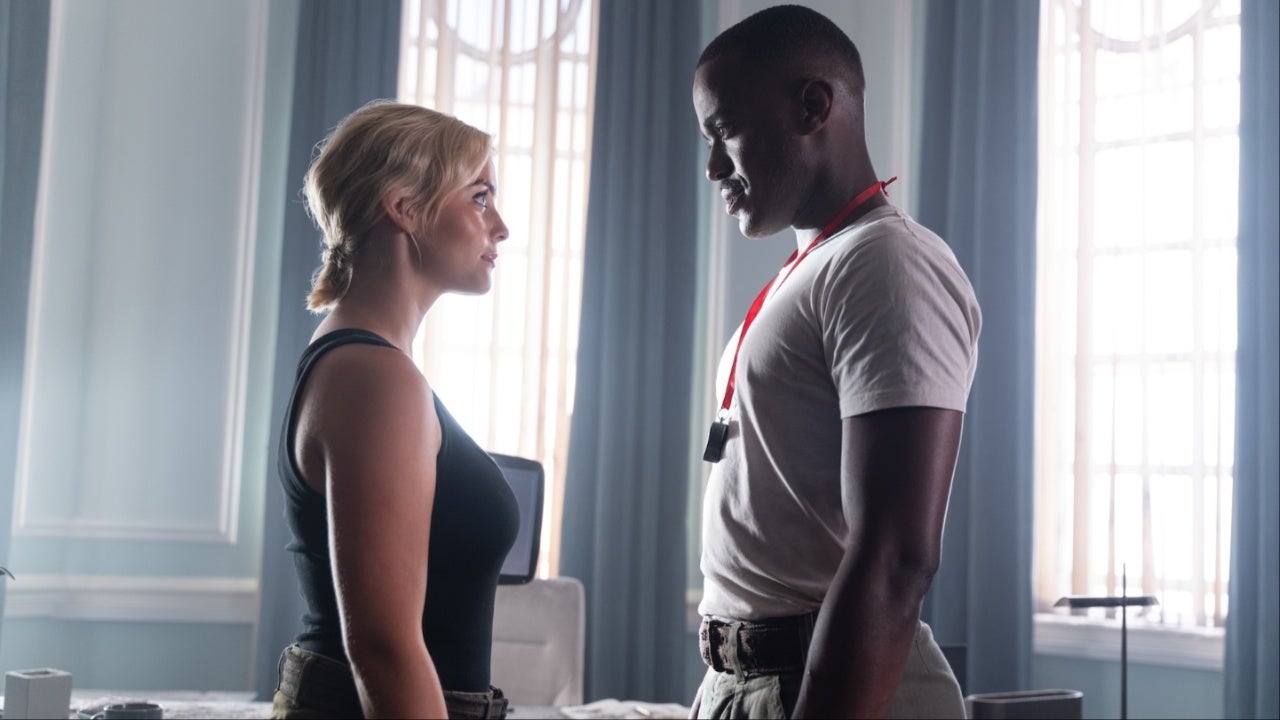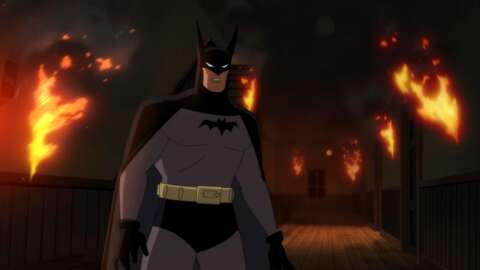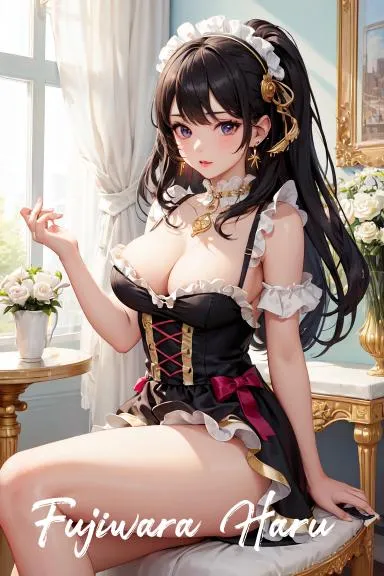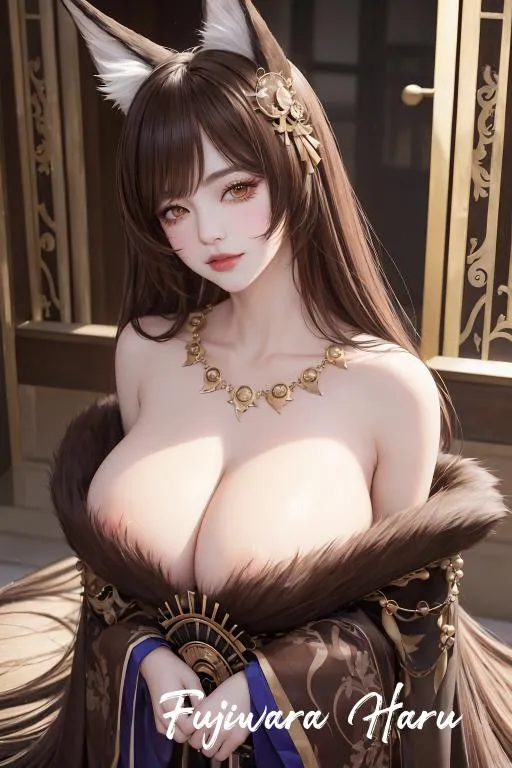Hollywood is a pretty scary place right now.
Blockbuster bombs with bloated budgets have put the squeeze on massive megacorps. Streaming sucked the blood out of theatrical revenues, only to be staked by profit-starved investors. New forms of onscreen entertainment are melting the brains of the next generation of mindless consumers. Even the workers are revolting!
The movie business is in the midst of a painful metamorphosis, but even in times of turmoil and change, one genre has quietly kept things alive and thriving.
“I just think horror is, at its best anyway, an inherently creative genre,” says Chucky creator Don Mancini. “You can really get extreme with it.”
Horror movies are about as old as cinema itself, and over the last 100 years, they’ve proven to be essential to the art and business of filmmaking in more ways than one.
“[People] ask what I do and I say, ‘I direct horror movies,’ and they’re like, ‘Oh, I don’t like horror movies,’” director Michael Chaves (The Nun II) recently told us. “I’m like, ‘Give me a break. You just haven’t tried it! It’s like saying you don’t like fish or sushi. You just haven’t tried the right one!”
So can horror save cinema from its decrepit state? It wouldn’t be the first time.
Part 1: It’s Alive!
We tend to think of horror as disposable, B-tier cinema, made on the cheap full of cheesy effects and cliches. But the genre lies at the very foundation of cinema itself. And since day one, horror films have always been a hotbed of new ideas, techniques and technology.
Early cinema wasn’t really about storytelling. People paid their hard-earned pennies just to stare at the images dancing in light. These films were more of an experience… an amusement park ride, as Martin Scorsese would say, serving cheap thrills and visceral feelings.
And it was only a matter of time before someone figured out how to instill what should be the easiest, most instinctive response of all – fear.
“It's not just about what's onscreen,” Pet Sematary: Bloodlines director Lindsey Anderson Beer tells us. “It's what do you hear? What do you see? What do you not see? How can I do this scare with cinematography? How can I do it with editing?”
1920’s The Cabinet of Dr. Caligari stars a sleepwalking psycho who stabs people to death and is foiled by a final girl. There’s even a twist ending! But Caligari’s most important contributions to film are the stylized sets and twisted architecture that inform every frame of the picture. The winding forests and claustrophobic cabins are purposely crafted to place the viewer in the mind frame of a madman. It was the first horror film that looked the way it wanted to make you feel.
Two years later, F.W. Murnau directed Nosferatu, an extremely unlicensed adaptation of Bram Stoker’s Dracula, and while the visuals are a little more grounded than the nightmare of Caligari, the techniques introduced have become inseparable from the language of cinema. Monsters cast impossible shadows as they slink across sets and scenery. Figures are framed within windows and stone arches to emphasize isolation and power. Brief cuts to unsettling images would become today’s jump scares and subliminal imagery.
These two films didn’t just introduce horror tropes to cinema. They laid the building blocks for modern editing, cinematography, and production design while introducing audiences to the concepts of atmosphere and tension.
Every film noir detective lurking in the city shadows, every askew angle of a Tim Burton movie, and every surreal David Lynch nightmare owes a debt to these two films, and to horror as a whole.
“You can find horror in so many non-horror movies,” The Exorcist: Believer and Halloween director David Gordon Green tells IGN. “If I watch a movie like In Cold Blood again, there are sequences in that that are as terrifying as any horror movie… These are movies that get into your body in a primal way.”
The brilliant makeup artistry of Lon Chaney laid the groundwork for Tom Savini’s gruesome prosthetics. Shambling men in sweaty suits evolved into the dripping rubber monstrosities of Stan Winston and Rob Bottin. In-camera illusions paved the way for far more complex computerized creations.
More importantly, horror is where filmmakers figured out how to do these things on a budget. Horror movies have largely stayed away from the excesses of modern-day blockbusters, and for good reason: It doesn’t take a lot of money to scare people.
Part 2: Return on the Living Investment
Star salaries are skyrocketing in a post-monoculture world. Big films are designed by committee to be broadly appealing, so arrogant execs feel comfortable throwing money away on endless reshoots. Special effects are looking worse and costing more than ever.
Movies have gotten really, really expensive.
Superhero films, animated movies, even somber Scorcese crime procedurals are all costing in the $200 million range these days, and they’re not exactly blowing the roof off the box office like it’s 2018. So thank Black Phillip for the one scrappy genre that consistently punches above its weight class and brings home the bacon without breaking the bank.
“We have so much content,” says Anderson Beer. “People are looking for experiences. And sometimes that means planets blowing up onscreen. And sometimes that means just being in an intimate setting and really, really scared.”
The highest-budget horror movie of all time is World War Z at $190,000,000. The movie was a medium success and surely sold a lot of Pepsi, but for most scary movies the math just doesn’t add up. Horror has always been a game of minimum spending to maximize profits, and it’s helped keep cinema alive through thick and thin.
Universal’s Dracula saved the studio and kicked off a golden age of monster mania in 1931, but the movie itself is basically a filmed play with few sets and no special effects. Bela Lugosi only got paid 3,500 bucks. Even Karloff made more than that!

Throughout the ’40s and ’50s, the studio system churned out cheapo horror flicks as inexpensive matinee fodder mainly for kids.
“Back in the day, the studio executives, they sort of looked down their nose at [horror] because it was not something they could dine out on,” Don Mancini says. “You always got the impression they were a little, not embarrassed by it, but it just wasn't their thing."
But the ’60s brought with them an independent film revolution that allowed filmmakers to follow their own rules, shatter taboos, and make a lot of money on lean productions.
In 1968, Pittsburgh filmmaker George Romero clawed together $114,000 to make Night of the Living Dead, and used every trick in the book to stretch it as far as he could. Grocery store chocolate syrup simulated blood, while zombies chowed down on donated meat from an investor who just so happened to own a butcher shop. And, since Romero couldn’t afford color film, he shot it in black and white. The movie grossed $30 million, over 260 times its budget.
A few years later, Tobe Hooper began filming The Texas Chain Saw Massacre with only $60,000. He couldn’t afford to replace the actors’ blood-drenched costumes, even when they started stinking in the Texas heat, and when he found out how expensive plastic skeletons were, he decided to dress his sets with real human bones. It too made $30 million.
The low-quality, high-contrast film stock in Night of the Living Dead gives it an almost found-footage documentary feel, while the amateur acting and sweaty, discomforting atmosphere make The Texas Chain Saw Massacre feel like a snuff film. Tiny budgets didn’t keep people away from the theater; they made the movies better and still do today.
“It forces you to be creative,” says Anderson Beer. “It forces you to really bring artistry to it, to do it in a unique or refreshing way if you're going to be effective about it.”
Totally Killer director Nahnatchka Khan adds: “Horror is scary because it feels like it's infiltrating your every day. And I think to feel grounded you don't need a $50 million budget or whatever it is. It's like you want to feel like you and I are talking and then something can burst in. It's the aesthetic of keeping it real [that] I think keeps those budgets in check.”
You don’t see too many horror flicks shot on an LED volume. Sure there’s a lot of scary-bad CGI out there, but horror is still where the best practical effects get to shine. Heck, practical effects might only be around today because horror has kept them alive out of frugal necessity.
The grindhouse horror of the ’70s would eventually be refined into the slightly more tame but even more profitable subgenre we call “slashers.” Halloween cost $300,000 and made $70 million. Friday the 13th cost $500,000 and made $60 million. A Nightmare on Elm Street made so much money for a failing New Line Cinema that the studio became known as “the House that Freddy Built,” which means without horror films, we wouldn’t have Lord of the Rings or the best Ninja Turtles movie.
Today the bar for entry is even lower. Anyone can make a horror movie. Anyone. Obviously, the vast majority of modern no-budget movies are gonna reach their ceiling streaming on Tubi, but when an inexpensive horror movie hits, it hits big.
It cost The Blair Witch Project $60,000 to tie some sticks together and strand some college kids in the woods with cameras, but they earned $250,000,000 worldwide, 4,000 times what they started with. Paranormal Activity, a film whose special effects include “slamming doors” and “time-lapse photography,” was filmed in seven days for $15,000 and made $194 million, giving birth to the empire known as Blumhouse.
The production company’s M.O. is to offer a diverse lineup of talent somewhere in the neighborhood of $10,000,000 to create unique films with a lower profit floor and a much, much higher ceiling. Minimal risk, maximum reward is the Blumhouse philosophy, and it’s done them extremely well so far, from The Purge and Happy Death Day to The Black Phone and M3GAN.
Blumhouse definitely had their misses, most recently with The Exorcist: Believer. The disappointing box office certainly had to sting after they made the curious decision to partner with Universal and buy the rights to the series for $400 million dollars
To put that in perspective, $400 million is what Blumhouse spent on all their other films combined, and they’ve made a lot of movies. Disney spent that much making just one Star War, and even though The Force Awakens brought in a cool $2 billion, compare that to the combined $5 billion dollar gross that Blumhouse has accumulated. With that kind of money and those budgets, you can afford a lot of misses.
It’s a winning formula, and not just at the box office. Horror movies keep Hollywood fresh as a beating source of new blood.
Part 3: The New Blood
Horror’s DIY spirit is a boon to the business side of movies, but it’s about more than just money. It’s about the future. Since money is so tight, there’s not much available to spend on above-the-line costs like A-list talent. But since there’s so little up-front monetary risk, producers can save some scratch by taking chances with untested, inexpensive new talent.
“One of the things that horror's done, I think, is it's attracted so many great young filmmakers,” says Saw franchise producer Oren Koules. “Because it's someone you can shoot. You don't necessarily need Tom Cruise. You don't need Tom Hanks.”
Actors are the most obvious. Pretty much every thespian worth their salt was either murdered in a horror movie or witnessed one on Law & Order. Julia Louis Dreyfuss was in Troll, future Scorcese muse Leo DiCaprio debuted in Critters 3, and Crispin Glover was a tour de force in Friday the 13th: The Final Chapter, just to name a few.
Hey, a gig is a gig, even if they are just more meat for the grinder, but actors aren’t the only ones making their bones in horror movies. Behind the camera, horror films serve as the training ground for new generations of Hollywood heavyweights.
“King of the B-Movies” Roger Corman brought assembly-line efficiency to film production, and the hundreds of mostly terrible films he produced under intense deadlines and microscopic budgets served as a de facto film school for countless Hollywood icons. Francis Ford Coppola, of The Godfather and fathering Sofia Coppola fame, was a lowly editor of softcore porn until Corman hired him to help make horror flicks. After a film came in under budget, Corman offered Coppola the leftover funds to make a movie of his own: Dementia 13.
James Cameron is another Corman grad, beginning as a special effects model maker and working up the ladder on horror films like Piranha and Galaxy of Terror. When the director of the Piranha sequel bailed, Cameron seized the opportunity.
Piranha 2 probably wasn’t his dream debut, but the practical philosophy Cameron learned from cheapskate Corman horror films served him throughout his career, from using identical twins instead of SFX duplicates whenever possible to making eight xenomorph costumes seem like hundreds through clever editing in Aliens.
Cameron might not be so concerned about budgets today, but he paid his dues in the salt mines of horror like so many before and since. Modern masters like Ari Aster, Ti West, and Jordan Peele got their start as directors in horror and became legends in the space. Others got their foot in the door with horror and brought its unique sensibilities into other genres.
Sam Raimi’s unhinged camera moves from Evil Dead translated to the dynamic comic book camp of his Spider-Man films. Kathryn Bigelow’s big break was the vampire western Near Dark, where she developed the trademark kinetic violence she’d bring to action movies like Point Break. Troma alumnus James Gunn introduced goofiness and gore to his superhero movies by way of Slither.
The list goes on and on. Making a horror film is almost a rite of passage in Hollywood, a blood-soaked baptism that gives new talent every lesson for success.
“Horror is one of those things where… you can come into it thinking about how to use every tool in the filmmaker's arsenal,” says Anderson Beer.
“I think specifically with horror, because it is so visual… you have to create a mood and an atmosphere and an intensity in a way that you don't necessarily have to in other genres because it's all about building,” adds Khan.
Horror teaches you to be lean and make the most with what you have. It teaches you to favor tension and mystery over shaky special effects and keeps filmmakers focused on the audience above everything else.
“You're not taught to think about the audience in film school,” Jason Blum, founder and CEO of Blumhouse tells IGN. “Horror movies, you have to really think about the audience, how to scare them, how to get them to react, how to make their blood pump. Making a horror movie, you really see what you're making from the point of view of the audience in a way that you don't in film school."
Fresh meat keeps horror from growing stale, but that’s not the biggest reason it's remained popular. Horror can be anything you want it to be. Horror is the one genre that’s truly universal.
Part 4: Universal Horror
Have you ever heard anyone arguing about whether “horror fatigue” is real? I doubt it. Horror might be the most flexible genre there is, and its consistency and longevity is directly related to its adaptability, especially how it evolves to reflect the fears of society.
“The best horror, I think you use your horror concept as a metaphor for something, ideally, that's going on in the world that will speak to the audience,” says Don Mancini.
Horror movies in the ’30s were vaguely Christian morality tales warning of an unwelcome “other.” By the ’50s this was replaced by atomic anxiety and Cold War paranoia. The growth of the suburbs and boomer safetyism of the ’70s are reflected in slasher films, and the burgeoning women's liberation movement and Roe v. Wade gave birth to movies like Rosemary’s Baby, The Exorcist, and The Omen. The ’80s were all about excess as studios exploited big franchises while cheap “video nasties” maintained horror’s shocking edge. The ’90s looked back on horror with an end-of-history snarkiness until the post-9/11 new millennium ushered in an age of torture porn that tried to make sense of a senseless “War on Terror.”
As for today, It’s hard to find a single issue that meets our particular messed-up moment. Peele’s Get Out and Nia DaCosta’s Candyman use horror to explore issues of race and identity, while films like Hereditary unpack grief and generational trauma.
Maybe modern horror movies aren’t defined by what they’re saying, but by how they are made. More often than not, horror films are low-status sludge, but every once in a while the genre gets a jolt of prestige.
In the ’70s, Jaws and Alien transformed monster movies into blockbusters. Later, The Silence of the Lambs would prove that horror flicks were worthy of Oscar glory. Today’s “elevated horror” films follow in the same footsteps. While the big studios are blowing billions chasing a cinematic universe, horror has filled the gap for moviegoers looking for something a little more cerebral.
“The horror genre in general is really just taken much more seriously than it used to be,” says Mancini. “And that has been a huge advantage and boon for anyone in my position who does this because they're legitimately enthusiastic about it.”
Horror is a language spoken around the globe, with nearly every culture enriching it with their own folklore and flavor. English horror films are traditionally reserved and elegant. Italian giallo is a vivid feast for the senses. Japanese and South Korean horror focuses on vengeful spirits and exquisite suffering. Every territory influences the other, chasing old trends and creating new ones.
The days of scouring eBay for a bootleg copy of Tetsuo the Iron Man are long gone. Today, imported horror is a big business, with the at-minimum horror-adjacent Squid Game topping the charts as Netflix’s most-watched content – number one in 94 different countries. Even if you don’t speak the language, horror is effective through imagery alone. It’s the purity of cinema laid bare.
“Everyone can relate to it. Everyone has been scared and can be scared,” says Chaves. “And that experience is really exhilarating, especially when it’s calibrated right and you have the right experience.”
Horror isn’t the most important film genre because it's innovative, or inexpensive. It’s not because of the boundaries it pushed or the talent it incubated. Horror is the most important film genre because it’s flexible enough to reflect the times, the tastes, and the traditions of the entire world.
No matter who you are, no matter where you live or what you’re into, odds are you’re afraid of something. And as long as movies exist, so will horror.
Interviews by Charlie Lopresto, Amelia Emberwing, and Tom Jorgensen




